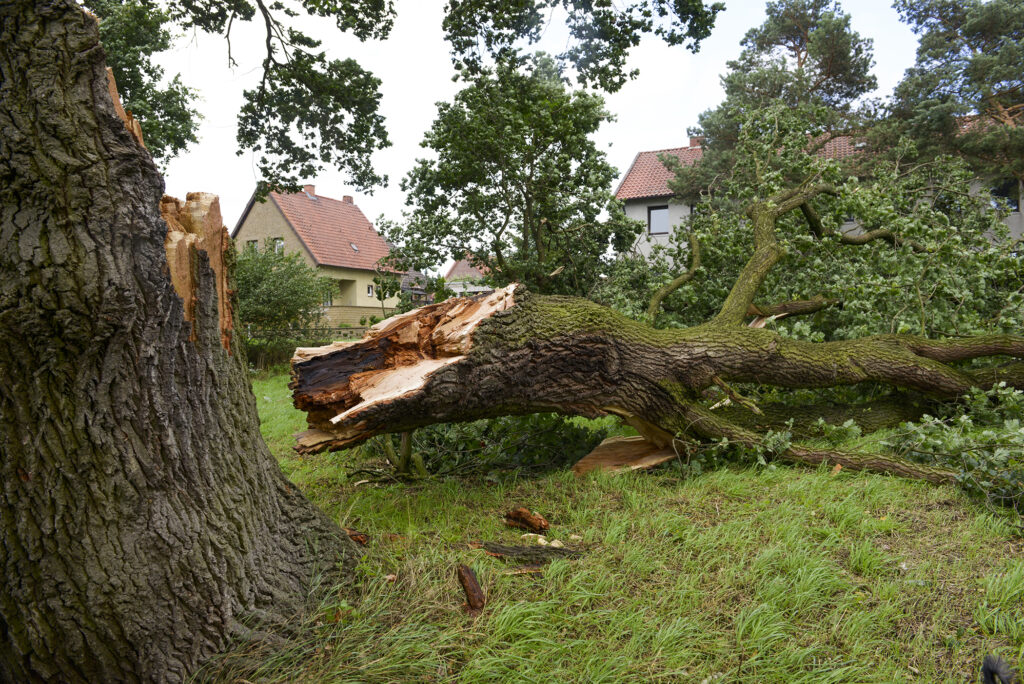When a hurricane or other violent storm blows through a community, one of the first pictures you’re likely to see is a fallen tree.
But downed trees and limbs aren’t just a byproduct of storms—they are an everyday occurrence that can often be avoided with the right efforts. According to a new study by researchers at the University of Georgia, the perceptions residents have about these risks can greatly influence a community’s response.
As a result, there’s often a gap between perception and reality that puts large parts of communities at risk.
Published in the journal Land, the study looks at the intersection of urban forest risk management and how residents view the risks posed by community trees. By revealing a patchwork of responses that don’t always correspond with a community’s resources or staffing, it shows the gap between how residents identify risk and what’s needed to avoid it in the first place.
Public versus private disconnect
“Some of our findings showed almost a disconnect between what municipalities are doing and what residents were doing. And that’s important because a huge amount of a city is going to be privately owned land,” said Abbie Judice, a recent graduate of the UGA Warnell School of Forestry and Natural Resources who is now an arborist with New Urban Forestry. “So, a lot of risk mitigation is happening on a municipal level, but community members weren’t aware of it. It was really like, person by person, if they were proactive about their own property’s risk management.”
As a result, since much of any community is privately owned, vast swaths of cities and towns had little to no mechanisms in place to respond to tree-related risks. Some respondents even noted the difference between risk on public versus private land—for example, there’s an expectation that a city would be pruning its trees regularly. But no similar expectation for privately owned properties.
It doesn’t take a storm to reveal risks posed by trees. Jason Gordon, assistant professor at Warnell and Judice’s advisor on the study, noted that there has been a lot of attention placed on risks posed by severe storms, wildfires, earthquakes or tornadoes. “But even if there’s no catastrophic storm, we still have trees falling,” he said. “And that’s kind of mundane—nobody’s paying much attention to that. But those of us in the tree world know that you have to continuously care for your trees. You can have a limb fall even under average conditions.”
Trees are an essential part of any community. In some cities, they define iconic spaces, such as parks. They provide respite from the heat, lower the temperature of pavement and help offset greenhouse gases. Gordon said there’s also evidence that trees add to property values.
‘It’s all about perception’
Often, he added, falling limbs or an uprooted tree are the least of residents’ concerns—until it happens.
“All of this comes back to a framework of community resilience and being able to prepare and bounce back from a disturbance,” he said. “If you take away the catastrophic storms, it’s a mundane risk. It’s all about perception.”
For the study, Judice selected four Georgia towns at random. The sites represented a range of population size, growth rate and median income. Some municipalities had a larger tax base and more resources—although this didn’t necessarily mean residents were more aware of tree risk. In contrast, small towns with little to no resources for tree care showed a large community awareness of trees.
For example, in one community that employed a certified arborist, residents saw tree care efforts on public property and felt satisfied that the tree care needs were met—and discounting any tree care that might be needed on private property. At the same time, residents of one small town were quick to call in a low-hanging branch over a roadway—even though the town lacked any resources to handle the issue.
When the storm hits
Also, some towns with few resources might focus their tree care efforts in more visible public spaces, such as a downtown park, even though greater risks may exist along roadways outside of town.
Across the board, Judice found residents think about tree risk before or after a storm. “And it’s exponential if your neighbor’s tree falls,” she added. But in general, if your neighbors’ trees aren’t concerning, then it’s not likely you’re considering risks posed by your own trees.
But as cities continue to develop, populations become denser and storms grow in intensity, Judice said, the concept of resiliency becomes more important. Tree care doesn’t have to be costly—although if it’s delayed, it can be.
“I’m from Louisiana, and hurricanes are a big topic for me,” she said. Too often, people are reacting to a situation that could have been prevented with a little effort. “Take a look outside and give an arborist a call if you see something that worries you or doesn’t look like other trees.”

